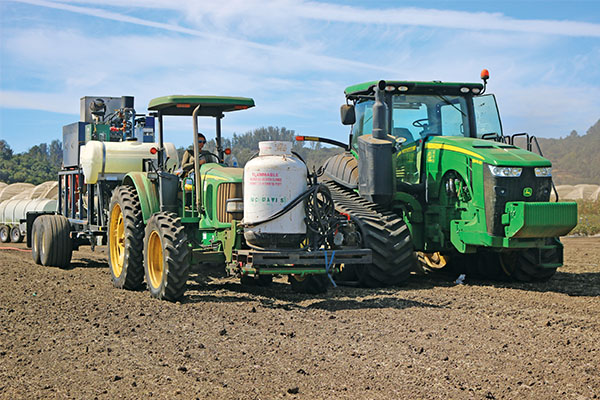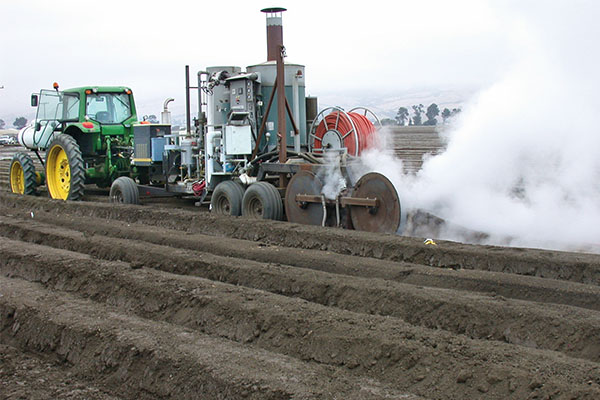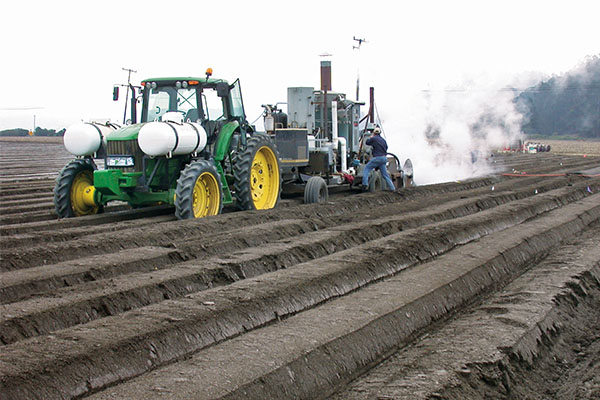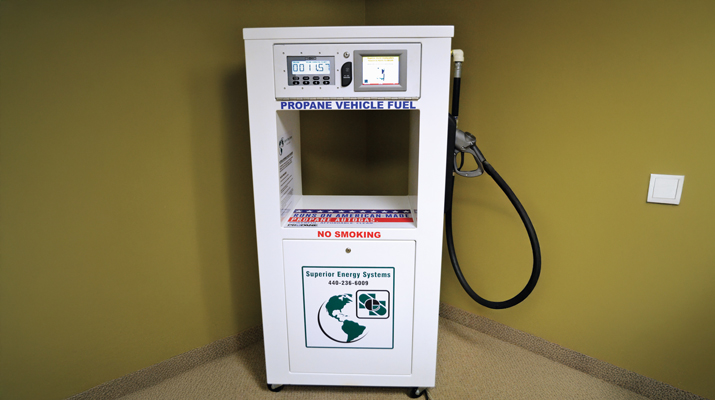Research shows propane-fired steam method an effective alternative to fumigants
Steam works.
Steve Fennimore has spent over a decade proving that concept as an extension specialist in University of California, Davis’ Department of Plant Sciences in Davis, California.
“In research, you jump into things because they work,” he says.
Specifically, steam works as a method to control soil pathogens and weeds for strawberry growers in California. Fennimore presented on the topic early this year at the World LPG Association’s Innovation for Growth Summit in Washington, D.C.
While the research results prove the benefits of steam-treated soils, the concept holds added importance for the LPG industry because Fennimore’s early tests showed how propane can serve as the primary energy source to produce the steam. Soil steaming offers the potential for significant propane gallon sales, making the findings worthy of bringing retailers into the conversation, he says.
Propane already carries a strong presence in the agricultural market. Retailers are accustomed to delivering the fuel to farms, and agricultural producers are familiar with its use for a number of applications. The situation in California, though, is less about propane’s familiarity and versatility on the farm than about its favorable air-quality ratings when powering applications that make sense for the market.
“We need steam because California has a lot of fumigant regulations that make them difficult to use,” Fennimore says.

Photo by Steve Fennimore
Teaming with steam
With Fennimore’s focus on steam, propane’s role becomes advantageous on a number of fronts. For one, steam would provide a solution to the controversial use of pesticides in plant production, including methyl bromide, and the increasingly stringent fumigant regulations in California.
In some cases, he says, growers and operators pay residents to move out of their houses for a couple of days while the fumigants are applied to the fields nearby.
“We have a lot of situations where we’d be better off not using fumigants – close to schools, hospitals. We call them sensitive sites,” Fennimore says.
“Our objective is to replace fumigants where possible and where necessary.”
The steam application would also open new opportunities for production of organic strawberry plants; traditionally, nursery strawberries haven’t been produced organically, Fennimore says. He estimates a 40 percent market penetration within four years of such an equipment launch. He’s also heard from organic fruit growers interested in a clean solution that would help control costs and regulations.
“With ag, the profit margin is fixed. There’s not a lot of room for increasing costs,” he says. “This has got to be a reasonable cost. It’s got to be reasonably fast.”
While strawberry growers who use fumigants seem to yield a more plentiful fruit, Fennimore’s research has shown that strawberry yields in steam-treated soils are comparable to yields in fumigated soils.
The soil steaming application and its positive results motivated one strawberry nursery company that wants to grow strawberry plants organically to form a nonprofit organization. Still in its formation, the Agricultural Soil Steaming Association (ASSA) would provide for the development and promotion of large-scale soil steaming systems as an alternative to remove pathogens from soil, according to its mission statement. ASSA would pool resources and expertise, and share risks of developing the technology, Fennimore says.

Photo by Steve Fennimore

A propane-fueled steam generator has been shown to be a promising alternative to fumigants. The constant application of hot water vapor kills pathogens in the soil. Photo by Steve Fennimore
Propane prototype
Fennimore and UC Davis put the steam treatment to the test during trials conducted in Salinas and Watsonville, California, beginning in 2011. The Propane Education & Research Council (PERC) funded development of the prototype, which consumed more than 1,600 gallons of propane per acre and worked well, he says.
The prototype helped to verify key measurements of the steam application – at what temperature to raise the soil and for what duration.
“Basically, it’s cooking,” Fennimore says. “We raise the soil temperature to 158 degrees for 20 minutes.”
Propane fires a steam generator. In the prototype, the steam was applied with a collaborator’s automatic steam applicator. The steam must physically mix with the soil at a depth of about 12 in. to 14 in. to create a clean rooting environment, Fennimore says.
“Fumigants disperse, but steam needs help” mixing with the soil, he says.
According to Fennimore, heat from the propane flame is transferred to the water vapor molecule that’s injected into the soil. The water vapor molecule hits the cool soil particles containing the pathogens, and the constant application of heat kills the pathogens.
“The purpose of the steam is an energy transfer to the soil particles because that’s the target,” Fennimore says. “Nothing is planted [yet]. We’re treating fallow ground.”
PERC has been a longtime supporter of the soil steaming endeavor. While the council isn’t currently funding the project, Michael Newland, director of agriculture business development, says the technology is intriguing. “It’s agronomically sound technology.”
“I’m still confident that propane is the best option from a fuel standpoint for this technology, for its cleaning-burning characteristics, especially in California,” he says. “It would be a great supplier of the steam and producer of the steam.”
The future
The steam applicator system holds much promise, but even after the research and trials, Fennimore has wrestled with the question: “How do you scale up?”
He says the application has drawn interest commercially, from growers, as well as from the equipment and technology space. He’s been in close contact with companies from Norway and South Korea about testing and developing their units to run in the United States. Farmers with machine shops also have wondered whether they could one day build their own units.
“I would love to encourage domestic production,” Fennimore adds.
Fennimore envisions two business models for such a steam machine – growers who own the equipment and put it to work in their operations and a custom business that would act as a contractor, charging per acre.
“We’ve got to get from the technology down to the grower level,” he says.
Fennimore says steam could be an alternative to fumigants for end users other than strawberry producers, like flower growers and golf courses. The University of Arizona is testing a propane steam generator for lettuce production.
















